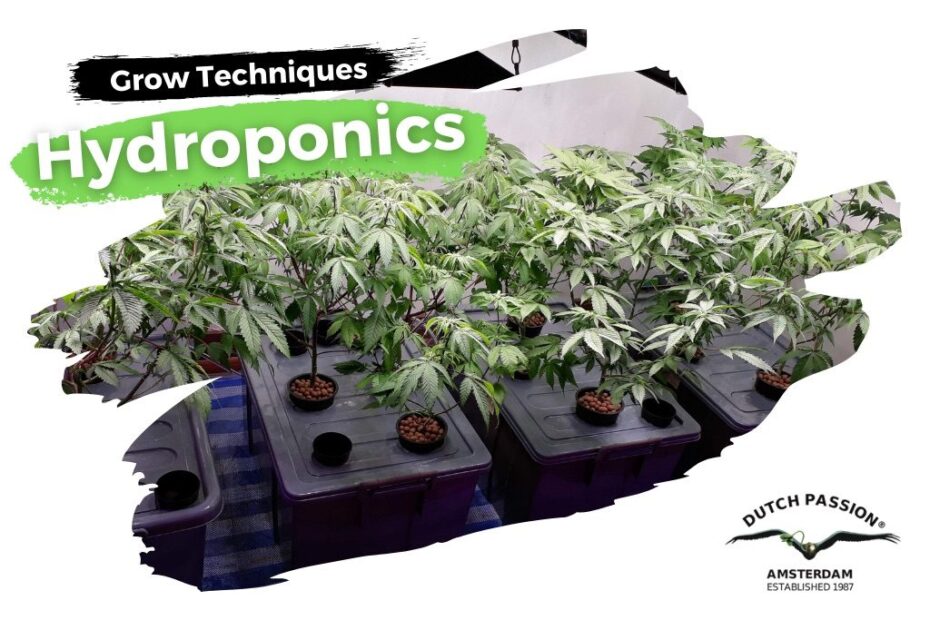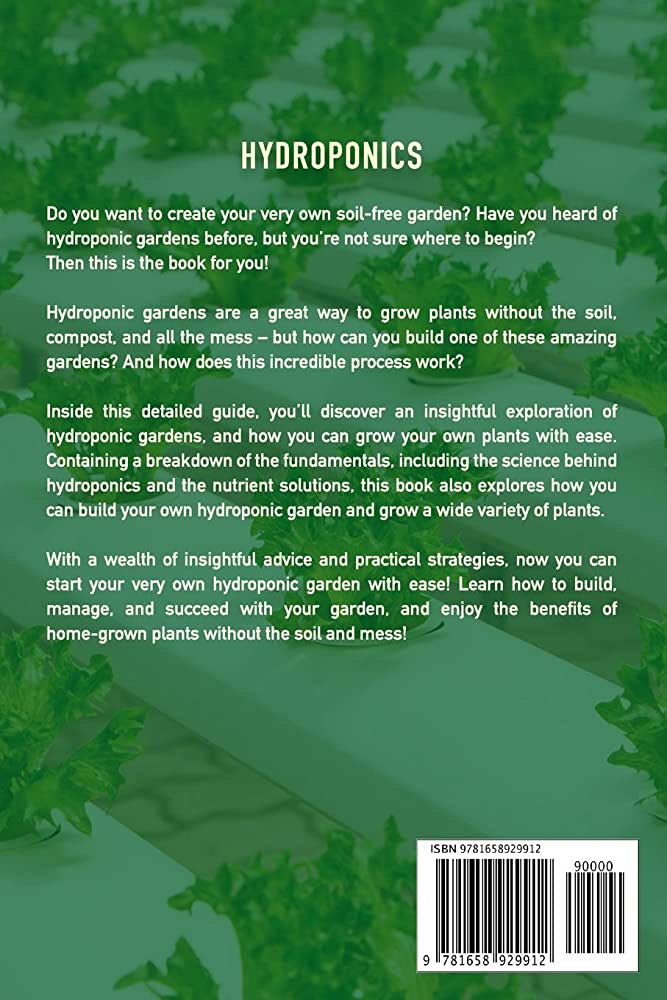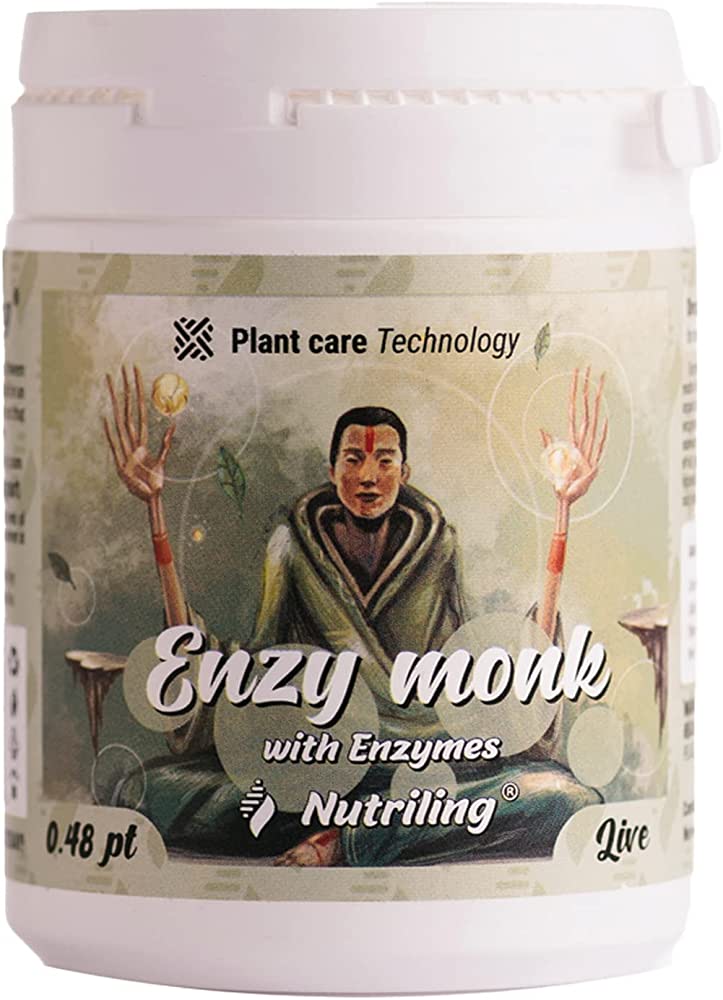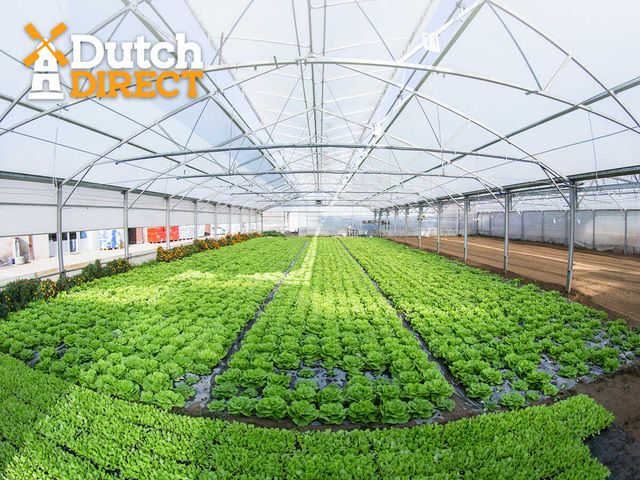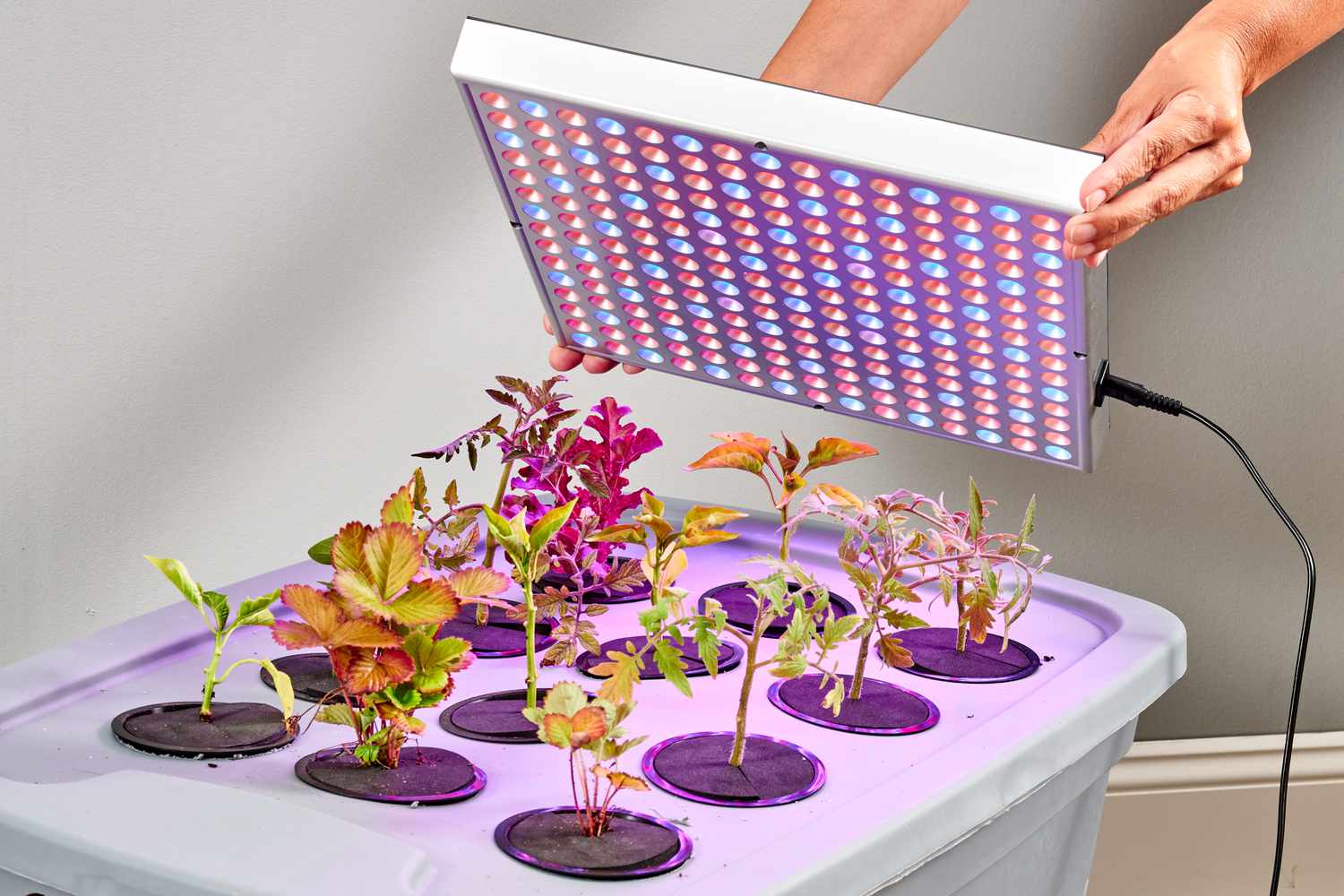Hydroponic wick systems use a passive method to grow plants without soil. Hydroponic wick systems are a type of hydroponic setup that uses a passive approach to growing plants without soil.
This system works by using a wicking material, such as cotton or nylon rope, to transport the nutrient solution from the reservoir to the plants’ roots. The wick draws the solution up into the growing medium, providing a steady supply of nutrients and water.
This method is particularly useful for smaller scale systems, such as those used in homes or schools, but may not be efficient for larger operations. Wick systems are straightforward to use and maintain, making them a great option for beginner hydroponic gardeners.

Credit: www.royalqueenseeds.com
How Hydroponic Wick Systems Work
Hydroponic wick systems are a type of technique used for growing plants without soil. Instead, water, along with a nutrient solution, is provided directly to the plant roots. The wick system is one of the simplest and easiest systems to set up, making it a popular choice for beginner hydroponic gardeners.
In this blog post, we’ll dig deep into understanding how hydroponic wick systems work. Let’s dive in:
Explanation Of Wick System Components
Hydroponic wick systems consist of simple components, including:
- A planting container
- A growing medium
- A wick
- A nutrient solution
The wick acts as a transporter that brings the nutrient solution from the reservoir to the plant’s roots. The wick is made up of a material that can absorb the nutrient solution and move it to the plant roots via capillary action.
Commonly used wick materials include cotton, nylon, or polyester.
Advantages Of Using A Hydroponic Wick System
The benefits of using a hydroponic wick system are numerous, including:
- Ease of setup: The wick system is one of the most straightforward hydroponic systems to assemble. There are no complex pumps or plumbing systems required.
- Low maintenance: The wick system automatically provides water and nutrients to the roots, reducing the need for constant monitoring.
- Cost-effective: Hydroponic wick systems are affordable and require minimal investment.
- Suitable for small spaces: As space is not a restriction, the wick system can be set up in indoor spaces or smaller outdoor settings.
Comparison Of Wick Systems With Other Hydroponic Systems
While the wick system offers a range of benefits, it has some limitations compared to other hydroponic systems, such as:
- Limited to small-scale growing: Hydroponic wick systems are suitable for growing smaller plants like herbs, lettuce and some types of vegetables, but they are not ideal for larger plants that require more water and nutrients.
- Slower growth rate: Plants grown through a wick system may grow slowly compared to those using other hydroponic systems.
- Not efficient for certain plant types: Some plants, such as those with high water demand, may not thrive in a wick system.
Hydroponic wick systems are a simple, cost-effective, and low maintenance way of growing plants without the use of soil. However, while it’s easy to set up and operate, it may not be the most efficient system for growing certain plants.
The choice of a hydroponic system ultimately depends on the gardener’s needs, preferences, and the plant they intend to grow.
Step-By-Step Guide On Setting Up Hydroponic Wick System
Hydroponic wick systems are a popular choice among gardeners who want to grow plants without soil. It is a simple yet effective system that is easy to set up and maintain, making it an ideal solution for beginners and seasoned growers alike.
We’ll guide you through the entire process of setting up a hydroponic wick system, step-by-step. So, let’s get started!
Choice Of Plants Suitable For Hydroponic Wick Systems
Before setting up a hydroponic wick system, it’s crucial to determine the type of plants suitable for this growing method. Here are a few examples of plants that thrive well in hydroponic wick systems:
- Leafy greens like lettuce, spinach, and kale
- Herbs like basil, cilantro, and parsley
- Certain varieties of strawberries and tomatoes
Materials Needed For Setting Up A Hydroponic Wick System
To set up a hydroponic wick system, you’ll need the following materials:
- A container for the growing medium and nutrient solution (preferably made of plastic to avoid corrosion and rusting)
- Growing medium, such as perlite, vermiculite, or coconut coir
- Wicks (cotton or nylon strings) to draw the nutrient solution from the reservoir to the growing medium
- Net pots to hold the plants in place
- Nutrient solution
- A water-tight reservoir to hold the nutrient solution
A Detailed Step-By-Step Procedure For Setting Up A Hydroponic Wick System
Now that you have all the materials let’s dive into the step-by-step procedure for setting up a hydroponic wick system:
- Fill the container with the chosen growing medium and moisten it with the nutrient solution. Ensure the medium is not too wet so that the wick can efficiently draw the solution.
- Place the net pots on the surface of the growing medium. Make sure they aren’t too close to each other, allowing enough space for plant growth.
- Thread one end of the wick through the net pot and leave the other end hanging from the pot’s base into the nutrient solution.
- Fill the reservoir with the nutrient solution, keeping the wicks submerged at all times.
- Place the container with the growing medium and net pots on top of the reservoir, making sure it’s secure.
- Add your chosen plants to the net pots and ensure they’re in position.
- Finally, switch on the grow lights and set the timer according to the plants’ requirements. Ensure the light is sufficient enough for the plants to grow healthily.
Maintenance Practices For Hydroponic Wick System
Maintenance is essential for the proper functioning of the hydroponic wick system, and here are a few maintenance practices to keep in mind:
- Monitor the nutrient solution level and top up as needed. It should be at least an inch above the bottom of the wick to avoid dryness.
- Check the ph and nutrient levels regularly and adjust as necessary.
- Clean and sterilize the growing medium and the system components to prevent the buildup of salt and pathogens.
- Inspect the wicks frequently and replace them if they become clogged or show signs of wear.
Hydroponic wick systems are an excellent way to grow plants indoors or outdoors without the need for soil. With the right materials and maintenance, it’s possible to grow a variety of plants using this method. We hope this step-by-step guide has provided you with the knowledge required to set up and maintain your hydroponic wick system successfully.
The Benefits Of Using Hydroponic Wick Systems
How Hydroponic Wick Systems Optimizes Plant Growth
Hydroponic wick systems optimize plant growth in various ways, making them popular among indoor and small-scale gardeners. Here are the benefits of using hydroponic wick systems in optimizing plant growth:
- Hydroponic wick systems make it easy to maintain a steady supply of nutrient-rich water to the plants. The wick pulls the water into the growing medium, ensuring that the plants always have access to water and nutrients.
- Hydroponic wick systems promote oxygenation of the roots, which leads to increased plant growth. The constant supply of oxygen to the roots leads to more efficient nutrient uptake.
- Wick systems are ideal for plants that like consistent moisture levels. As the wick draws water into the roots, it reduces the chances of overwatering or underwatering the plants, providing optimal conditions for growth.
Environmental Benefits Of Using Hydroponic Wick Systems
Hydroponic wick systems have numerous environmental benefits over traditional soil-based gardening methods. Here are some of the benefits that you will experience when using the wick system:
- Hydroponic wick systems use less water than traditional gardening methods. The system recirculates the water through the pot, reducing the water needs of the plants.
- Using wick systems, you can grow plants without the use of herbicides or pesticides. This makes wick systems an ideal choice if you want to grow organic produce.
- By using hydroponic wick systems, you reduce your overall carbon footprint. The wick system requires less energy to operate and reduces the emissions associated with traditional soil-based gardening.
Economic Benefits Of Hydroponic Wick Farming
Hydroponic wick farming offers numerous economic benefits, making it an attractive option for smallholders and indoor farmers. Here are some of the economic benefits of using hydroponic wick systems:
- Wick systems are cheap to set up, leading to lower start-up costs for smallholders. The systems are also easy to operate, making them a popular option for novice gardeners.
- By using hydroponic wick systems, you can increase your crop yield, leading to higher profits. The constant supply of water and nutrients leads to faster plant growth.
- Hydroponic wick farming can be an ideal way of growing high-value crops such as herbs and microgreens. The controlled environment of the wick system produces high-quality and consistent yields, which can fetch a premium price.
Hydroponic wick systems offer numerous benefits, making them an excellent choice for indoor and small-scale gardeners. From optimizing plant growth to environmental and economic benefits, wick systems are becoming increasingly popular, especially for those seeking sustainable, affordable, and consistent yields.
Common Mistakes To Avoid While Using Hydroponic Wick Systems
Common Pitfalls During Setting-Up
When it comes to setting up hydroponic wick systems, there are several common mistakes that beginners often make. Here are the key points to keep in mind:
- Make sure your container has enough space: Hydroponic wick systems work by using a wick to transfer nutrient-rich water from a reservoir to the plant roots. To ensure that the system works effectively, the container holding the plant should have enough space.
- Don’t over-pack your container with too many plants: Overcrowding your container can result in insufficient water and nutrient absorption by the plants, leading to poor growth and development.
- Use quality wick material: Using substandard wick material can result in slow water absorption, causing plant roots to dry out and die.
Plant Maintenance Oversights
Proper plant care and maintenance is critical to the success of hydroponic wick systems. Some common pitfalls to avoid include:
- Check water and nutrient levels regularly: In hydroponic wick systems, it’s vital to maintain adequate water and nutrient levels for plant growth. Check your reservoir frequently and adjust nutrient levels and ph as needed to keep your plants healthy.
- Trim old and dead leaves: Decaying leaves can harbor harmful bacteria and fungi, leading to plant disease and death. Be sure to remove any old or dead leaves to keep your plants healthy.
- Prune foliage regularly: Pruning your plant’s foliage helps to promote healthy growth, prevents the spread of disease, and improves water and nutrient absorption.
Overcoming Common Technical Difficulties
Even with proper maintenance, hydroponic wick systems may encounter technical difficulties. Here are some key points on how to overcome common problems:
- Monitor for clogging: Clogging is a common technical difficulty in hydroponic wick systems. When the wick gets clogged, water transfer to the plant roots is slowed down or stopped completely. To prevent clogging, clean your wick regularly and replace it once it starts to fray.
- Maintain the appropriate ph level: Plants grown in hydroponic wick systems are highly sensitive to changes in ph levels. Be sure to regularly monitor and adjust the ph level to ensure optimal plant growth and development.
- Ensure proper lighting: Adequate lighting is essential for plant growth in hydroponic wick systems. Choose appropriate led grow lights and place them within the necessary distance from the plants to ensure proper light intensity.
Troubleshooting
If issues persist despite taking the above measures, it’s time to troubleshoot. Below are some key points to keep in mind when troubleshooting hydroponic wick systems:
- Check for pests and diseases: Pests and diseases can cause significant damage to your plants. Inspect your plants regularly to detect any signs of pests or diseases. If necessary, use appropriate pesticides or fungicides to eradicate the problem.
- Keep the reservoir clean: Dirty water can harbor harmful bacteria and fungi, leading to plant disease and death. To prevent this, regularly clean the reservoir.
- Replace damaged or underperforming equipment: If any of your equipment is damaged or underperforming, replace it with new equipment to ensure optimal plant growth and development.
Best Practices For Successful Hydroponic Wick Systems Farming
Hydroponic Wick Systems: Best Practices For Successful Farming
Hydroponic wick systems are an efficient, low-cost method for growing plants without soil, where the plant roots directly draw the nutrient-rich water solution needed to promote growth. However, as with any other growing methodology, the success of a hydroponic wick system largely depends on the best practices employed by the growers.
Here are a few tips to achieve optimal success when farming with hydroponic wick systems:
Importance Of Monitoring Ph Levels
One of the most critical factors to consider in hydroponic wick system farming is ph levels. The ph levels range from 0 to 14, with 7 being neutral, and anything below or above 7 being acidic or alkaline, respectively. For optimal growth, the ph level of the nutrient solution should range between 5.
5 and 6. 5. Deviations from this range can lead to a reduction in nutrient uptake by the plants and result in poor growth.
- Regularly check ph levels using a ph meter or testing kit.
- Always adjust the ph level of the nutrient solution as needed.
- Keep the ph level consistent throughout the plant’s growth cycle.
Essential Nutrients For Optimizing Plant Growth
Plants require specific essential nutrients to thrive, which include nitrogen, phosphorus, and potassium (npk), as well as secondary and micronutrients. In hydroponic wick system farming, these nutrients should be diluted in the nutrient solution to promote plant growth and yield.
- Test the nutrient solution regularly to ensure all essential nutrients are present.
- Keep the solution at the right concentration, not too diluted or concentrated.
- Find the recommended npk levels for each plant type.
How To Prevent Pest Infestation In Hydroponic Wick System Farming
Pests can easily infest hydroponic wick systems and cause extensive crop damage and, in some cases, total crop loss. Here are a few tips to mitigate the risk of pest infestation:
- Keep the growing area clean and sanitized to reduce the risk of pest harborage.
- Avoid using contaminated water and equipment as they are common sources of pest infestation.
- Use fine mesh netting as a physical barrier to prevent insects from entering the growing area.
- If pests are detected, use organic pest control solutions like neem oil or an insecticidal soap to avoid damaging the plants.
Strategies For Maximizing Yields
Maximizing crop yields is the ultimate goal of any hydroponic wick system farmer. Here are some strategies to optimize yield:
- Space plants well, and ensure that they receive adequate lighting.
- Prune regularly to improve light penetration and promote bushy vegetative growth.
- Keep the nutrient solution balanced and at a consistent ph level.
- Maintain humidity and temperature levels at optimum ranges for the specific plant type.
By adhering to these best practices, hydroponic wick systems farming can be a highly productive, rewarding, and cost-effective means of producing crops.
Frequently Asked Questions Of Hydroponic Wick Systems
What Is Hydroponic Wick System?
A hydroponic wick system is a passive hydroponic technique that draws nutrient solution to plants through wicks.
How Does Hydroponic Wick System Work?
The wick system works by the capillary action of wicks, which draw nutrient solution from a reservoir to the plant roots.
What Are The Advantages Of Using Hydroponic Wick System?
Hydroponic wick systems are easy to set up, low-cost, and require minimal maintenance. They are also ideal for small spaces.
What Plants Can Be Grown Using A Hydroponic Wick System?
A variety of plants can be grown using a hydroponic wick system, including leafy greens, herbs, and small fruiting plants like strawberries or cherry tomatoes.
How Often Should You Water A Hydroponic Wick System?
In general, a hydroponic wick system should be watered every two to three days, depending on the size of the plant and the conditions of the environment.
What Are Some Common Problems With Hydroponic Wick Systems?
Common problems include root rot, nutrient deficiency, and clogging of the wick. Regular maintenance can help prevent these issues.
Conclusion
To sum it up, hydroponic wick systems offer an affordable and effective way to grow plants indoors. They require minimal investment and maintenance while producing high yields of fresh produce. Whether you’re a seasoned gardener or just starting out, using a hydroponic wick system is a great option for those who want to grow plants without soil.
By following these simple steps, you can easily set up your hydroponic wick system and enjoy the benefits of fresh, healthy produce all year round. Happy growing!
